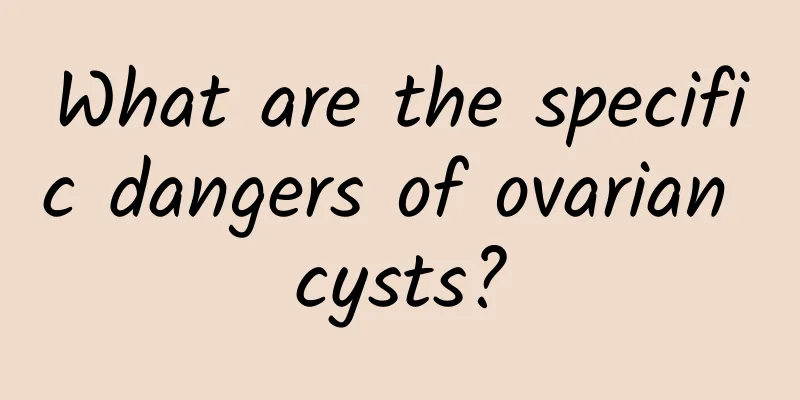What is the biggest cause of uterine fibroids? What are the signs of uterine fibroids?

|
What is the biggest cause of uterine fibroids? What are the signs of uterine fibroids? Uterine fibroids are a common problem faced by many women, which can cause pain, irregular menstruation, and other uncomfortable symptoms. This article will explore the biggest causes of uterine fibroids and some common signs of uterine fibroids. 1. Genetic factors are one of the biggest causes of uterine fibroids Genetics play an important role in the development of uterine fibroids. Studies have found that if your mother or sister has uterine fibroids, you are at a greater risk of developing them as well. This is because genetic factors can cause abnormal hormone levels in your body, which can lead to the formation of uterine fibroids. 2. Hormone imbalance is also an important cause of uterine fibroids Hormonal imbalance is another important cause of uterine fibroids. Uterine fibroids are caused by abnormal proliferation of smooth muscle cells in the uterine lining, a process that is regulated by hormones. When estrogen levels in the body are elevated, the risk of uterine fibroids also increases. Therefore, some conditions with hormonal imbalances, such as polycystic ovary syndrome and menopause, can also lead to uterine fibroids. 3. Age is another important factor in uterine fibroids Age is an important factor in the development of uterine fibroids. Studies have shown that women between the ages of 40 and 50 are most likely to develop uterine fibroids. As women age, the level of estrogen in their bodies gradually decreases, and this hormonal change can stimulate the growth of uterine fibroids. Therefore, age is an important factor in the development of uterine fibroids. What are the signs of uterine fibroids? 1. Abnormal menstrual cycle A common precursor to uterine fibroids is an abnormal menstrual cycle. If your menstrual cycle becomes irregular or prolonged, or even has excessive menstrual flow, it may be one of the early signs of uterine fibroids. 2. Abdominal pain or pressure Uterine fibroids can cause abdominal pain or pressure. This pain may be caused by the enlargement of the fibroids and the pressure on the abdominal cavity. Sometimes, these pains are more obvious during menstruation. If you have abdominal discomfort or pain, you should see a doctor immediately. 3. Frequent urination or constipation As uterine fibroids grow, they may put pressure on the bladder and rectum, causing frequent urination or constipation. If you frequently feel the urge to urinate or have difficulty defecating, this may be one of the precursors to uterine fibroids. In summary, the biggest causes of uterine fibroids are genetic factors and imbalanced hormone levels. Age is also an important factor, with women between the ages of 40 and 50 having the highest chance of developing uterine fibroids. Women should pay close attention to their menstrual cycles, pay attention to abnormal cycles, and discomfort such as abdominal pain or pressure. If similar symptoms occur, see a doctor as soon as possible and receive appropriate treatment. |
>>: What to eat to make uterine fibroids disappear What to eat to make uterine fibroids smaller
Recommend
What can I eat after surgery for adenomyoma? What should I pay attention to after surgery for adenomyoma?
What can I eat after surgery for adenomyoma? What...
What to do if bleeding continues after abortion? There are 2 ways to treat it
Bleeding after abortion may be caused by poor ute...
Can adnexitis heal on its own?
Adnexitis generally cannot heal on its own. Since...
Can you lose weight by eating according to your blood type? No scientific evidence
Are you type A, B, O or AB? Many people believe t...
What are the physical treatment methods for female cervical erosion? Analysis of the advantages and disadvantages of physical treatment for cervical erosion
In life, patients with cervical erosion should ch...
How to buy abortion pills online
You cannot buy abortion pills online. Abortion pi...
Can pregnant women with cervical erosion give birth naturally? Pregnant women with cervical erosion must know these issues
Cervical erosion, a common gynecological disease ...
Why does menstruation last so long?
What causes a long menstrual period? The reasons ...
40% of disadvantaged students prepare their own meals during summer vacation and the nutritional conditions are poor
Xiaobao and his sister have been raised by their ...
Are there many cases of threatened abortion being cured?
What mothers are most worried about in early preg...
How to differentiate metrorrhagia (dysfunctional uterine bleeding) from other diseases?
Xiaoqin's menstruation has been a little irre...
What are the reasons for misdiagnosis of ectopic pregnancy?
Since the early symptoms of ectopic pregnancy are...
Effective prevention of dysmenorrhea in daily life
Among gynecological diseases, dysmenorrhea is one...
The key to losing weight in the lower body is to promote metabolism
Do you envy the slender and long legs of models o...
How much does it cost to treat pelvic peritonitis?
This is a materialistic society. Our comfort and ...









